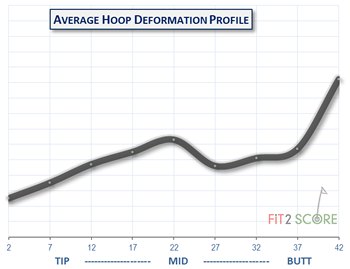Mitsubishi Tensei 1K Pro Orange Golf Shaft Review
 By Russ Ryden, Fit2Score, A Dallas Fort Worth Club Fitter & Builder
By Russ Ryden, Fit2Score, A Dallas Fort Worth Club Fitter & Builder
The Highlands Performance Golf Center, Carrollton Texas
Golf Digest Certified America’s 100 Best Club Fitter
![]()
The Mitsubishi Tensei pro 1K Orange is the second shaft model using the thinner Carbon Kevlar woven material just below he grip. The tip is Mitsubishi Chemical’s MR70 that is claimed to be stronger and more elastic than typical carbon fiber materials.
To continue reading this section of the review, you must be registered at a higher level membership.
Russ





 I have seen many shafts over the years with a woven material placed in the butt of shafts. This is as an indication that shaft manufactures recognize the thin walls near the but of the shaft deform and oval under load. The ovaling of the shaft in this area can contribute to shot dispersion. The woven Kevlar® material use by Mitsubishi is the only material I have measured to date where I can see a measurable effect. Hoop deformation significantly dips in this section of the shaft. Reduced hoop deformation in the 1K weave is the same as the CK weave. Mitsubishi tells us the 1K material transmits more feel.
I have seen many shafts over the years with a woven material placed in the butt of shafts. This is as an indication that shaft manufactures recognize the thin walls near the but of the shaft deform and oval under load. The ovaling of the shaft in this area can contribute to shot dispersion. The woven Kevlar® material use by Mitsubishi is the only material I have measured to date where I can see a measurable effect. Hoop deformation significantly dips in this section of the shaft. Reduced hoop deformation in the 1K weave is the same as the CK weave. Mitsubishi tells us the 1K material transmits more feel.